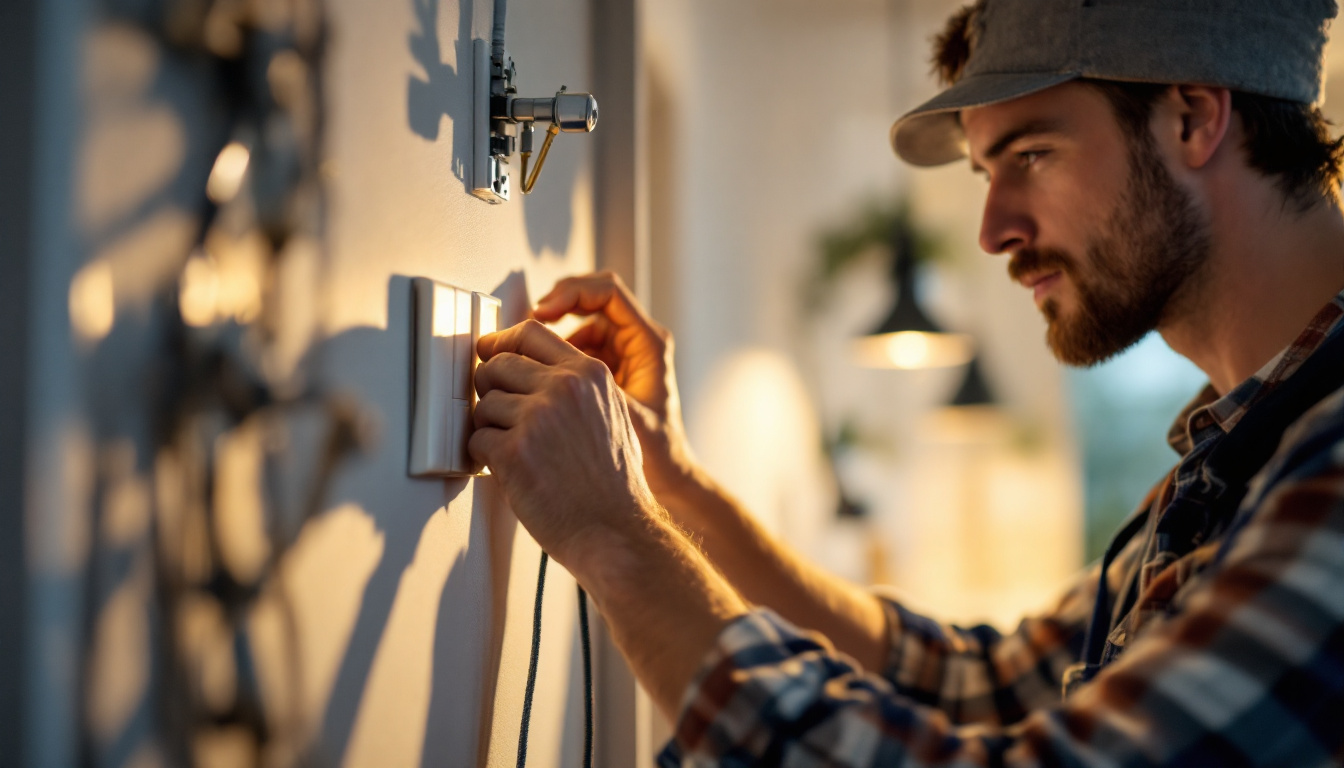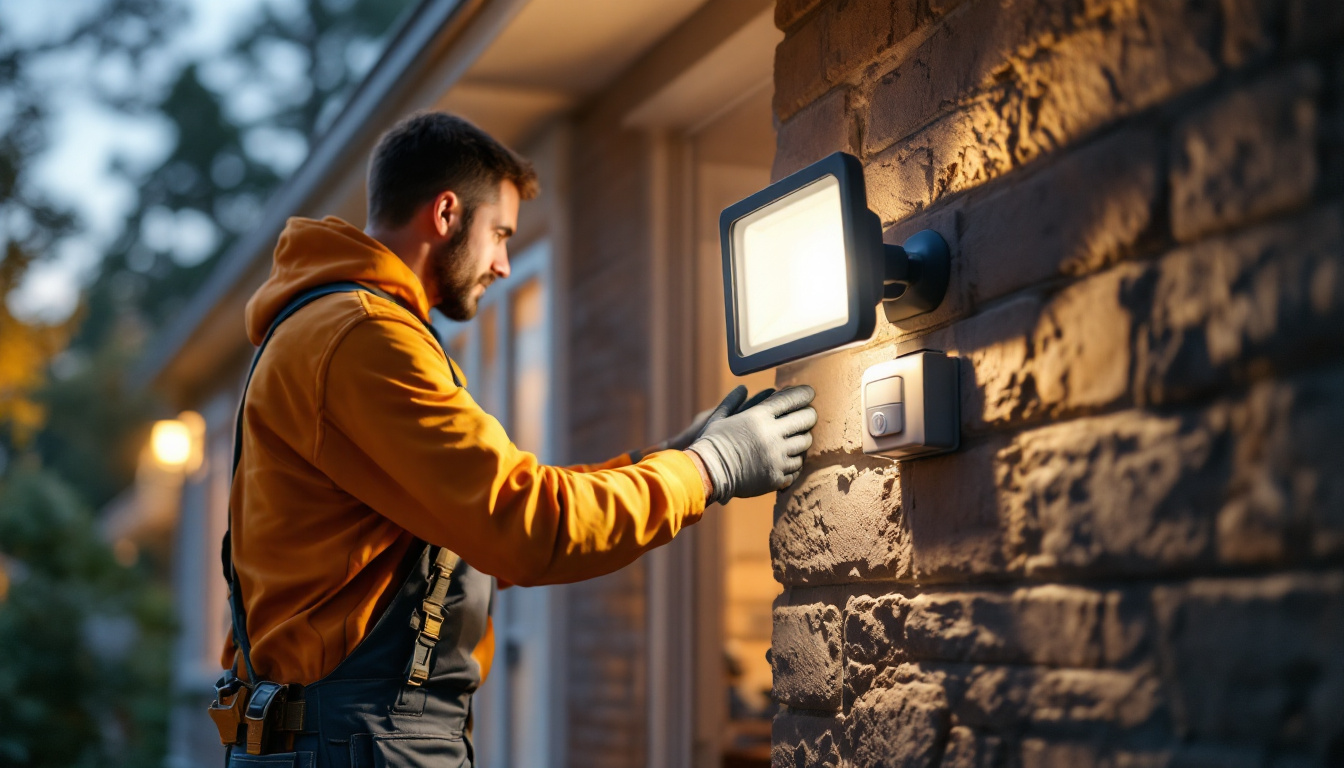
In the world of electrical installations, lighting contractors often face the challenge of ensuring that spaces are not only well-lit but also user-friendly. One of the key components in achieving this is the use of 3-way switches. These devices allow for the control of lighting from multiple locations, making them invaluable in both residential and commercial settings. This article delves into the significance of 3-way switches, their functionality, and the best practices for installation and troubleshooting.
3-way switches are designed to control a single light or a group of lights from two different locations. This feature is particularly beneficial in larger rooms, hallways, or staircases where convenience and accessibility are paramount. The ability to turn lights on or off from multiple points enhances the overall functionality of a space, making it safer and more comfortable for occupants. Imagine walking into a long hallway and being able to switch on the lights from either end, or having the ability to control the lighting at the top and bottom of a staircase without having to navigate the steps in darkness. This not only improves safety but also adds a layer of convenience that is especially appreciated in homes with children or elderly residents.
The operation of a 3-way switch involves two switches that are connected to a single light fixture. Each switch has three terminals: one common terminal and two traveler terminals. When the switches are flipped, they either connect or disconnect the circuit, allowing the light to be turned on or off from either location. This design eliminates the need for multiple switches on a single wall, providing a cleaner and more organized appearance. The wiring configuration can seem complex at first, but understanding the role of each terminal can demystify the process. The common terminal serves as the main pathway for electricity, while the traveler terminals are responsible for the connection between the two switches, allowing for seamless control of the light fixture.
In a typical setup, one switch is connected to the power source, while the other is connected to the light fixture. The traveler wires connect the two switches, allowing them to communicate with each other. This configuration not only simplifies the wiring process but also enhances the flexibility of lighting control. Additionally, the versatility of 3-way switches means they can be used in various configurations, such as in conjunction with 4-way switches for even more control points, making them ideal for larger spaces or more complex lighting designs.
There are several types of 3-way switches available on the market, each with unique features and benefits. The most common types include traditional mechanical switches, smart switches, and dimmer switches. Understanding the differences between these options can help lighting contractors choose the right switch for their specific needs. Mechanical switches are the most straightforward option, providing reliable performance without the need for additional technology. They are often favored for their simplicity and durability, making them a go-to choice for many residential and commercial applications.
Smart switches, on the other hand, offer advanced features such as remote control capabilities and integration with home automation systems. These switches can be controlled via smartphone apps or voice commands, allowing users to adjust their lighting from anywhere in the home. Dimmer switches allow for adjustable lighting levels, providing added flexibility in how spaces are illuminated. This can be particularly useful in settings where ambiance is important, such as dining areas or home theaters. The ability to customize lighting not only enhances the aesthetic appeal of a room but can also contribute to energy savings by allowing users to use only the necessary amount of light for their activities.
The advantages of incorporating 3-way switches into lighting designs are numerous. For lighting contractors, understanding these benefits is crucial to providing clients with optimal solutions.
One of the primary benefits of 3-way switches is the convenience they offer. By allowing users to control lighting from different locations, these switches eliminate the need to walk across a room or down a hallway to turn lights on or off. This is particularly important in larger spaces or areas with multiple entry points, where accessibility can significantly impact user experience.
In addition to improving convenience, 3-way switches also contribute to energy efficiency. By making it easier for occupants to turn off lights when they are not needed, these switches can help reduce energy consumption and lower electricity bills. This not only benefits the environment but also aligns with the growing trend of sustainable living, where homeowners are increasingly looking for ways to minimize their carbon footprint.
Safety is another critical consideration when it comes to lighting design. 3-way switches enhance safety by ensuring that lights can be easily turned on or off from multiple locations. This is especially important in areas such as staircases, where adequate lighting is essential to prevent accidents.
Moreover, the strategic placement of 3-way switches can help eliminate dark spots in a home or commercial space, further enhancing safety. By providing ample lighting control, contractors can create environments that are not only aesthetically pleasing but also safe for occupants. Additionally, in emergency situations, having multiple access points to control lighting can be a lifesaver, allowing individuals to navigate safely through a space without fumbling in the dark.
Furthermore, the integration of 3-way switches into smart home systems can elevate safety and convenience to new heights. With smart technology, homeowners can control their lighting remotely via smartphones or voice commands, ensuring that lights are on when they arrive home or that they can turn off lights from their beds without getting up. This added layer of control not only enhances safety but also provides peace of mind, especially for families with children or elderly members who may require extra attention.
For lighting contractors, proper installation of 3-way switches is essential to ensure optimal performance and safety. Following best practices can help avoid common pitfalls and ensure that the installation meets code requirements.
Before beginning the installation process, it is crucial to plan the wiring layout carefully. This involves determining the locations of the switches and the light fixture, as well as identifying the power source. Proper planning helps to minimize the risk of errors and ensures that the installation is efficient.
Contractors should also consider the type of 3-way switches being used, as different models may have specific wiring requirements. Familiarizing oneself with the manufacturer’s instructions can provide valuable insights into the installation process. Additionally, taking into account the flow of traffic and the usage of the space can influence switch placement. For instance, in hallways or large rooms, positioning switches at both ends can enhance convenience and accessibility, making it easier for users to control lighting without having to traverse the entire area.
Adhering to local electrical codes is paramount when installing 3-way switches. These codes are designed to ensure safety and reliability in electrical installations. Contractors should be well-versed in the relevant codes and regulations to avoid potential issues during inspections.
Additionally, using high-quality materials and components can help ensure that the installation is durable and long-lasting. This not only enhances safety but also reduces the likelihood of callbacks due to faulty installations. It is also advisable to invest in tools that are specifically designed for electrical work, as they can improve the accuracy and efficiency of the installation process. For example, using a wire stripper with multiple gauge settings can help prevent damage to the wires, ensuring a secure and reliable connection. Furthermore, labeling wires during the installation can save time during troubleshooting and future modifications, making it easier to identify circuits and maintain the system effectively.
Even with careful installation, issues can arise with 3-way switches. Being able to troubleshoot common problems is an essential skill for lighting contractors, as it can save time and improve customer satisfaction.
One of the most common issues with 3-way switches is wiring problems. If the switches are not functioning correctly, it is essential to check the wiring connections. Loose or incorrect connections can prevent the switches from communicating properly, leading to inconsistent lighting control.
Contractors should start by turning off the power to the circuit and inspecting the wiring at both switches and the light fixture. Ensuring that all connections are secure and correctly wired can often resolve the issue.
Switch malfunctions can also occur, particularly with older or low-quality switches. If a switch is not functioning as expected, it may need to be replaced. Contractors should be familiar with the signs of a malfunctioning switch, such as flickering lights or a switch that feels loose or unresponsive.
In many cases, replacing a faulty switch is a straightforward process. However, it is essential to ensure that the replacement switch is compatible with the existing wiring and meets the necessary specifications.
3-way switches are essential tools for lighting contractors, providing enhanced convenience, safety, and control over lighting in various environments. Understanding their functionality, benefits, and best practices for installation and troubleshooting is crucial for delivering high-quality electrical services.
As the demand for efficient and user-friendly lighting solutions continues to grow, lighting contractors must stay informed about the latest advancements in switch technology and installation techniques. By mastering the use of 3-way switches, contractors can enhance their service offerings and ensure that clients receive the best possible solutions for their lighting needs.
Incorporating 3-way switches into lighting designs not only improves the overall functionality of spaces but also contributes to energy efficiency and safety. As such, they remain a vital component in the toolkit of any lighting contractor, paving the way for innovative and effective lighting solutions.
Ready to enhance your lighting projects with the convenience and safety of 3-way switches? Look no further than LumenWholesale for all your lighting needs. Our extensive selection of top-quality, spec-grade lighting products comes at unbeatable wholesale prices, ensuring you get the best value for your investment. Say goodbye to inflated markups and hello to reliable, high-performance lighting that meets the highest industry standards. Plus, with free shipping on bulk orders, you can stock up on essential tools like 3-way switches without any hidden fees. Elevate your lighting solutions today by visiting Wholesale Lighting at the Best Value and experience the perfect blend of quality, affordability, and convenience with LumenWholesale.

Discover the essential checklist for lighting contractors when selecting and installing ceiling light flush mounts.

Discover the ultimate guide to finding the best deals on ceiling fans with lights, featuring expert insights from top lighting contractors.

Discover expert strategies for overcoming common challenges in landscape outdoor lighting projects.

Discover how lighting contractors can enhance their services and boost client satisfaction with motion detector flood lights.